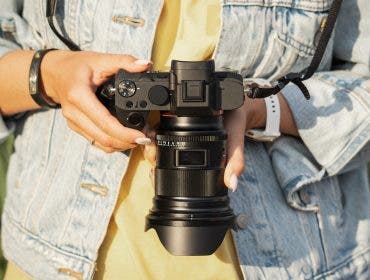Nothing is worse than when the hours of work you put into editing the perfect photo go to waste because it doesn’t look right on Instagram. Unfortunately, if you want to display the very best-looking images, there are a few rules you need to follow. If you don’t, you risk posting a pixelated photo with poor color and contrast. Whether you’re an avid social media user or a once-in-a-blue-moon poster, this guide to the best export settings will help you know exactly how to export your images for Instagram in 2024.
Every photo editing software is different, but wherever you edit photos, apply all of the following settings for the best results on Instagram.
Best Export Settings for Instagram
- 4:5 image crop
- JPEG file format
- sRGB color space
- 1080 pixels wide
- 72ppi resolution
- Added sharpening
Image Crop
The native crop for Instagram is 4:5. This means that your image should be five pixels high for every four pixels wide. While it is possible to post in other aspect ratios (such as 1:1 or 3:2) the 4:5 crop generally sees the highest engagement on Instagram. You should crop your image before going to the export settings, which can be quickly done in most photo editors. Unfortunately, Instagram does not support the standard 2:3 ratio many photographers natively shoot.
File Format
JPEG is the best file format for Instagram. Adjust the quality to 100 and export as a normal JPEG image. If your photo is in a RAW format, you’ll need to convert it by running it through a RAW editor and exporting it as a JPEG. PNG, GIF, and BMP files are also supported if you need to upload mixed media.
Color Space
While your monitor may be capable of displaying colors with a far wider color gamut, Instagram prefers sRGB. If you’ve ever felt like the colors don’t quite match your computer screen, it’s likely because you posted it in a different color space. If you use a different color space with a wider gamut of colors, Instagram is forced to attempt to convert your image, oftentimes resulting in colors that don’t quite look right.

Image Size
The size of your image is very important when posting to Instagram. A width of 1080 pixels is the recommended size for any image. If your image is smaller, it may appear pixelated. If you upload an image larger than 1080 pixels wide, Instagram will automatically downsize the image for you. For that reason, uploading a larger image isn’t necessary, but it won’t hurt you. Adjust the width of your image to 1080 pixels, and leave the height blank. This will allow the height to be manually selected based on the crop of your image. If your image is too small, consider resizing it for the best results.
Image Resolution
You should change the resolution of your image to 72ppi, which stands for pixels per inch. This is the standard for most digital screens, and Instagram prefers 72ppi.
Sharpening
It’s certainly nice to add some additional sharpening to your image before you export it to Instagram. Since your image is likely getting significantly downsized (to 1080 pixels wide), you can add quite a bit of sharpening to make your photo pop better. Zoom out on your screen to make the image smaller, similar to the size that your viewers will be seeing the image on the Instagram app. Then, add enough sharpening to make a difference, but not too much that your photo is oversharpened.

Other Instagram Best Practices
Unfortunately, posting an amazing-looking photo isn’t enough to go viral. There are other tips and tricks to help blow up your Instagram feed and boost your following.
Post at the Right Time
When your posts are seen and interacted with by many people just after you post, it is more likely to appear on the feeds and Explore Pages of people who don’t follow you. This can help boost your organic traffic, meaning potentially new followers you don’t have to spend money to find. Posting at a time when much of your audience is likely to be on Instagram is a great place to start. If you have a business account, you can view your audience insights and see when they will most likely be active.
Post Content that is Likely to Get Engagements
Shares, comments, and likes are the three best ways to get your content seen by more people—in that order. A like lets Instagram see that people are engaging with your post, but a comment is weighted even higher in the Instagram algorithm. Ideally, post content that is thought-provoking or encourages comments. There’s a reason why you see so many posts that pose a question or ask you to “Tag a Friend.”
A share is even better. This is when a user sends your post to another user. Not only does Instagram notice this, but it’s also free marketing! Someone who saw your post is sending it to someone else who may find the content relevant, potentially giving you another follower or chance to do business.
Respond to Comments and Interact with Other Posts
Responding to comments is one of the best ways to boost engagement on your own post. When you respond to a comment, a user gets notified about your response, potentially offering them a bridge to return to your profile, engage with other content, or follow you. The same goes for interacting with other’s posts. You’ll be surprised at the connections you can make when people see your comments on their posts!
If you follow all of the rules, your Instagram posts should help to elevate your work—not hinder it.






